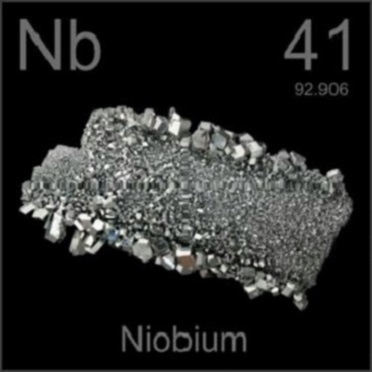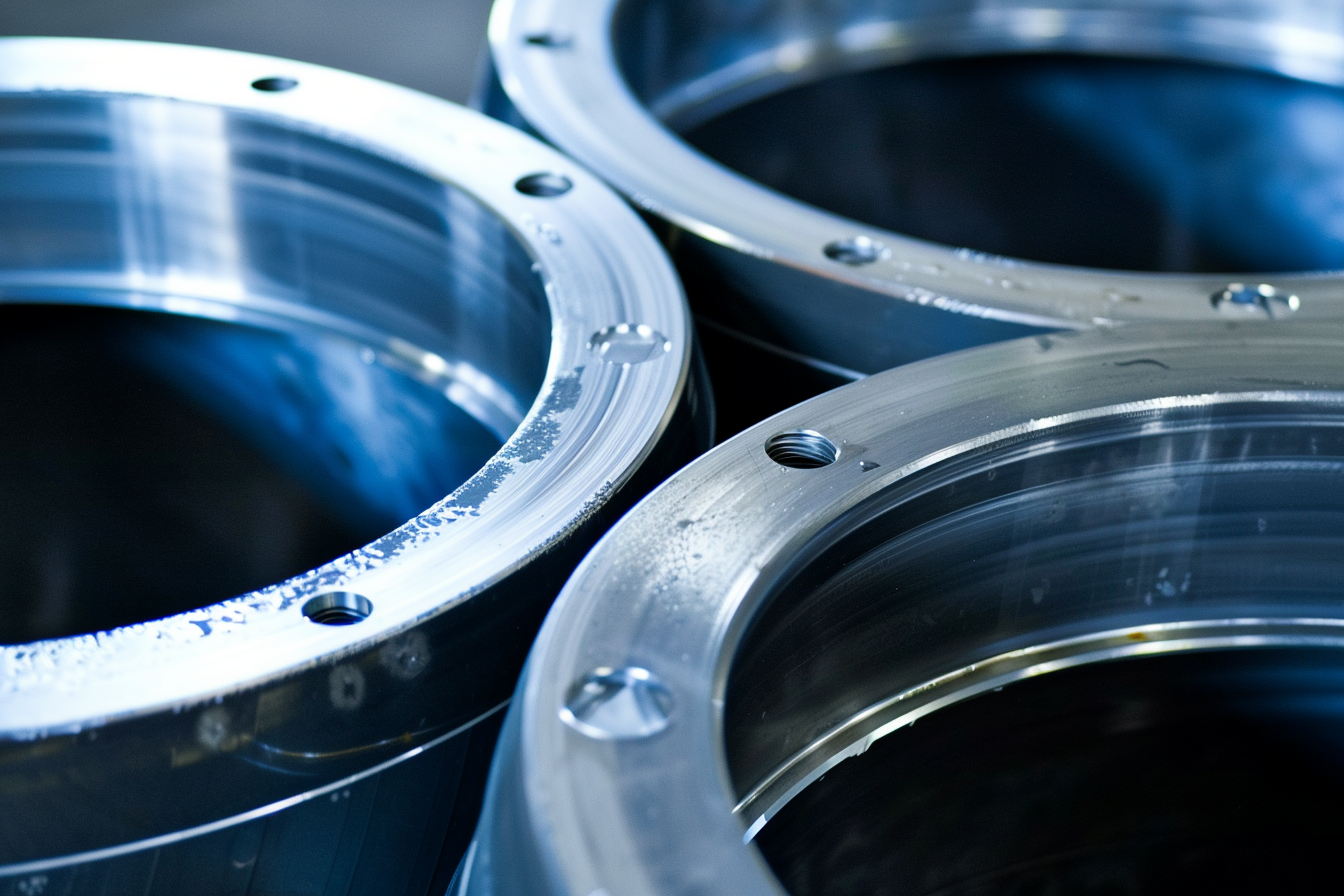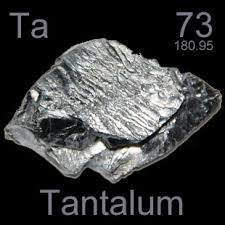1. Introduction
Refractory metals like tantalum (Ta) and niobium (Nb) play an increasingly important role in thin film technology, particularly for environments that demand both high-temperature stability and corrosion resistance. These two elements, known for their exceptionally high melting points and strong chemical inertness, have found widespread use in advanced protective coatings.
As industries such as chemical processing, nuclear energy, and aerospace seek longer-lasting and more reliable surface protection under harsh conditions, the demand for high-purity Ta and Nb sputtering targets continues to rise. This article outlines the key material characteristics of Ta and Nb, highlights their suitability for extreme environments, and explores how they’re used to create high-performance corrosion-resistant thin films.
2. High-Temperature and Corrosion Resistance of Ta & Nb Targets
Tantalum is a dense, ductile metal with a melting point of approximately 3,017°C. It has a body-centered cubic (BCC) crystal structure, making it mechanically strong and resistant to creep at elevated temperatures. Ta also features excellent thermal conductivity and good formability, which is critical during the thin film deposition process. At high temperatures, tantalum maintains structural integrity and does not easily oxidize in inert or vacuum environments. Its mechanical properties remain stable even under thermal cycling, which is essential for coatings exposed to temperature fluctuations. Tantalum’s corrosion resistance is one of its most outstanding traits. It forms a compact and stable oxide layer (Ta₂O₅) that protects it from attack by most acids, including hydrochloric, nitric, and even aqua regia at moderate temperatures. This makes Ta-based coatings suitable for reactors, heat exchangers, and chemical vapor transport systems. In thin films, tantalum provides a chemically inert barrier, preventing substrate degradation and extending component lifespan.

Niobium has a slightly lower melting point than tantalum—around 2,477°C—but shares many structural similarities. It is lightweight, highly ductile, and forms a BCC lattice, which contributes to its flexibility in both bulk and thin film form. Nb also has low neutron absorption, making it useful in nuclear applications. Niobium exhibits reliable performance under high temperatures and retains ductility even after prolonged exposure to elevated heat. This makes it an excellent choice for coatings that require both toughness and thermal endurance, especially in oxidation-controlled or vacuum environments. While not as universally corrosion-resistant as tantalum, niobium performs well in acidic environments, particularly at elevated temperatures. It also forms protective surface oxides like Nb₂O₅, which act as diffusion barriers. These oxides can be engineered in thin film form to provide excellent resistance against aggressive chemical species, including halogenated acids and organic solvents.
To better illustrate the differences and similarities between tantalum (Ta) and niobium (Nb) in terms of their high-temperature stability and corrosion resistance, the key physical and chemical properties are summarized in the table below:
| Property | Tantalum Sputtering Target | Niobium Sputtering Target |
|---|---|---|
| Melting Point (°C) | ~3,017 | ~2,477 |
| Crystal Structure | Body-Centered Cubic (BCC) | Body-Centered Cubic (BCC) |
| Density (g/cm³) | 16.65 | 8.57 |
| Ductility | High | Very high |
| Thermal Conductivity (W/m·K) | ~57 | ~53 |
| Oxidation Resistance | Excellent; forms stable Ta₂O₅ oxide | Good; forms protective Nb₂O₅ oxide |
| Corrosion Resistance | Outstanding; resistant to most acids including aqua regia at moderate temperatures | Good; resistant to many acids, especially at elevated temperatures |
| Mechanical Stability at High Temp | Maintains strength and resists creep | Retains ductility and toughness |
| Neutron Absorption | Moderate | Low (advantageous for nuclear applications) |
| Typical Applications | Chemical reactors, heat exchangers, protective coatings in harsh environments | Nuclear industry, oxidation-resistant coatings, chemical processing |
4. Thin Film Deposition Techniques Using Ta and Nb Targets
Sputtering
Magnetron sputtering is the most common method for depositing Ta and Nb-based thin films. It allows precise control over film thickness, composition, and structure. High-purity Ta and Nb targets are bombarded with energetic ions, ejecting atoms that form a thin layer on the substrate.
Other Deposition Methods
-
Chemical Vapor Deposition (CVD): Used for conformal coatings, particularly when uniformity across complex geometries is needed.
-
Electron Beam Evaporation: Offers high deposition rates and is suitable for vacuum-compatible systems.
-
Atomic Layer Deposition (ALD): Sometimes used to deposit ultrathin oxide films of Ta or Nb with atomic-level precision.
Influence of Process Parameters
The deposition process parameters—including substrate temperature, reactive gas composition (such as Ar/O₂ or Ar/N₂ ratios), sputtering power, and target-to-substrate distance—play critical roles in determining the microstructure and functional properties of the resulting films.
For instance, increasing the substrate temperature generally promotes enhanced atomic mobility, leading to improved film crystallinity and density, which in turn enhances corrosion resistance and mechanical adhesion. The choice and ratio of reactive gases affect the stoichiometry and phase formation of oxide or nitride films, directly influencing their protective capabilities.
Additionally, sputtering power controls the energy and flux of deposited species; higher power can increase deposition rate but may also induce defects if not properly balanced. The target-substrate distance affects the kinetic energy and angular distribution of sputtered atoms, impacting film uniformity and adhesion strength.
Therefore, systematic optimization of these parameters is essential to tailor film characteristics for specific applications, ensuring optimal performance and durability.
5. Applications of Corrosion-Resistant Films
Chemical Industry
Tantalum and niobium coatings are used as inner linings for components in acid processing, such as pumps, valves, and reactors. Their resistance to aggressive chemicals extends service life and reduces maintenance.

Nuclear Sector
Due to their thermal and radiation stability, both Ta and Nb thin films are used as protective barriers in fuel cladding, shielding, and structural materials exposed to neutron flux and high temperatures.
Other Emerging Fields
Applications also include microelectronics, where corrosion resistance and high-purity requirements are stringent, and aerospace components that operate in oxidizing atmospheres at elevated temperatures.
6. Case Studies and Performance Evaluation
Film Performance Testing
Tantalum and niobium films have been subjected to thermal cycling tests, acid immersion, and mechanical stress analysis. The results show that films made from these targets retain their structure and performance under simulated operating conditions.
Comparative Results
In direct comparison, tantalum films tend to offer better acid resistance, while niobium films may be preferred where lower weight or specific electronic properties are needed. Both show excellent adhesion and stability when deposited under controlled conditions.
Film Structure–Performance Correlation
Denser films with fewer pinholes and defects consistently show better corrosion resistance. The use of nano-layered or gradient-structured films can further improve performance by enhancing barrier properties and reducing stress accumulation.
7. Conclusion
Tantalum targets and niobium targets offer a reliable route to producing corrosion-resistant coatings that function well in high-temperature, chemically aggressive environments. Their unique physical and chemical properties make them ideal candidates for demanding applications across chemical, nuclear, and high-tech sectors.
For researchers and engineers seeking high-purity sputtering targets for such purposes, Stanford Advanced Materials (SAM) offers a wide range of Ta and Nb target products with:
-
High purity (≥99%)
-
Custom shapes and sizes (discs, plates, rotatory targets)
-
Stable microstructure and low impurity levels
-
Technical support for thin film applications
With years of experience in advanced materials supply, SAM is a trusted partner for both R&D and industrial-scale deposition projects.





